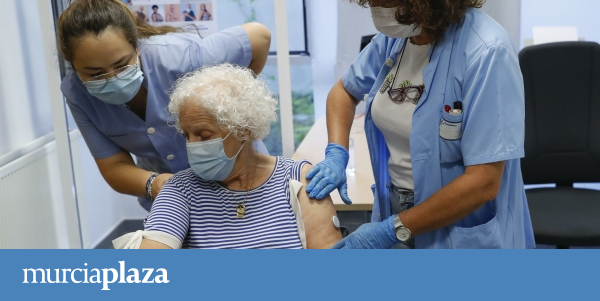MURCIA. Respiratory infections constitute one of the most impactful sections in the Pathology Infectionsadue to its high frequency, changes in its epidemiology, etiology, and high morbidity-mortality associated with various factors.
Currently, the Ministry of National Health, in a study collected in September 2020 and composed of patients with respiratory infections since 2017, reports that 13 million people acquire and develop respiratory infections per year, making up 57.5% of all infections . Of these, 8.2 million correspond to upper respiratory tract infections (common cold), with a slight predominance in women; bronchitis in 1.8 million; tonsillitis in 1.5 million; 565,000 to flu; 522,000 in laryngotracheitis and 220,000 in pneumonia.
“the mask ALMOST disappeared from our lives”
With regards to etiology, a recent European prospective study evaluated 2,957 adults with lower respiratory tract infection syndrome, with persistent, dry, or productive cough as the main symptom. All underwent diagnostic tests (Pcr) for six viruses, resulting positive in 46% of cases. from them, rhinovirus (40%), iinfluence–complaint (20%) a coronavirus (13%) were the most frequent. Similarly, in patients with COPD, 50% of decompensations are caused by viruses.
Thus, in a very recent study of 1728 patients with decompensated COPD, the diagnostic test was found rhinovirus in 16%, respiratory syncytial virus (RSV) in 10%, and influenza in 8%. Other viruses, adenoviruses, bocavirusThey have rarely appeared. In community-acquired pneumonias, 10-20% are virus related. When microbiologically documented (40%-60%), the most common cause is S peumoniae (Pneumococcus), noting that between 12-18% are polymicrobial, pneumococci together with atypical microorganisms (chlamydia, mycoplasmas, etc.).
Aerosols or sprays, from droplets of saliva or exhaled products (nasal mucus, respiratory secretions), together with direct or indirect personal contact, are the main transmission mechanisms. Currently, since covid, we are starting to appreciate the importance of airborne transmission.
What happens in the time of covid-19?
During the most serious phases of the covid it was mandatory to wear a mask, wash your hands with hydroalcoholic derivatives at the entrance to all buildings or entities, maintain a safe distance, limit the number of people in meetings, etc. then when, mainly thanks to vaccinationsbetter control was achieved, as well as with the arrival of the new omicron era variants, which had less gravity, the mandatory nature of these restrictions began to be relaxed. Today the mask is mandatory only in hospitals, pharmacies and public transport. In the rest of the institutions, large services, markets, shops, restaurants, etc., the mask has almost completely disappeared. In addition, there are few places where there are applicators for hydroalcoholic solutions at the entrance, which used to be in everyone.
Having said that, logically following Mother Nature’s designs, the viruses that have been blocked, especially with the use of masks, by removing them and reopening their front door have seized the opportunity to invade us, once again, with more force, affecting children with RSV bronchiolitis and elderly with influenza and acute persistence of the new covid variants.
What’s the problem?
The problem lies in the development of its complications, associated with bacterial superinfections, which require more medical care, more frequent hospitalizations and a higher mortality rate, especially in elderly patients and/or in those with various comorbidities (obese, diabetic, cardiac, bronchitis (smokers), hepatic, renal and oncohaematological and autoimmune immunocompromised patients requiring immunosuppressive treatment). In children, associated risk factors are immune deficiency, structural and allergenic alterations.
So what can we do?
First, raise our defenses, improving cellular immunity, through the administration of Vitamin D at high doses, maintaining its levels above 50 Mu/L. The addition of Vitamin C in high doses enhances its effect and also, having antioxidant properties, protects against respiratory infections. Similarly, although there are controversies, various studies find a beneficial effect with the administration of Zinc as an antiviral and quercetin, as a protector of respiratory receptors.
Secondly, recover the use of masks indoors and in large crowds, suggesting to people with catarrhal processes, to wear it to avoid its transmission and as a sign of education and respect for others.
Finally, in the cases with risk factors already mentioned, their own should be considered etiological treatment:
1.- Oseltamivir or peramivir in influenza A.
2.- Pascovid in covid in non-transplanted patients without immunosuppressive treatment, who require control due to their interactions.
3.- Influenza and Bronchitis.- Anti-pneumococcal antibiotic prophylaxis, since the “pneumococcus” is considered the “captain” of deaths from community infections, representing the fifth leading cause of death in the world. Similarly, in this group of patients, the initial and simultaneous use of corticosteroids, in our experience, we have found significantly associated with a faster response and better evolution in patients with community-acquired pneumonia and hospitalized.
In summary, respiratory infections continue to be the most frequent, but when covid and the mandatory use of masks arrived, the flu and other infections almost disappeared from the map. Now, with the disappearance of the mandatory nature of masks with the indicated exceptions, viral respiratory infections have re-emerged with their greatest clinical, health and socio-economic impact. Having said that, it is necessary to reflect, evaluating the new situation through better knowledge, and to resume the fundamental preventive measures which continue to be of the utmost importance.
Technological advances constitute one of the fundamental pillars of Modern Medicine, but the basic measures, from Hippocrates passing through Galen and the big one Semmelweiss (researcher and discoverer of the effectiveness of To wash hands), continue to be of fundamental importance for the future of infectious diseases.
Joaquin Gomez Gomez
Emeritus Professor of Infectious Medicine at the University of Murcia


